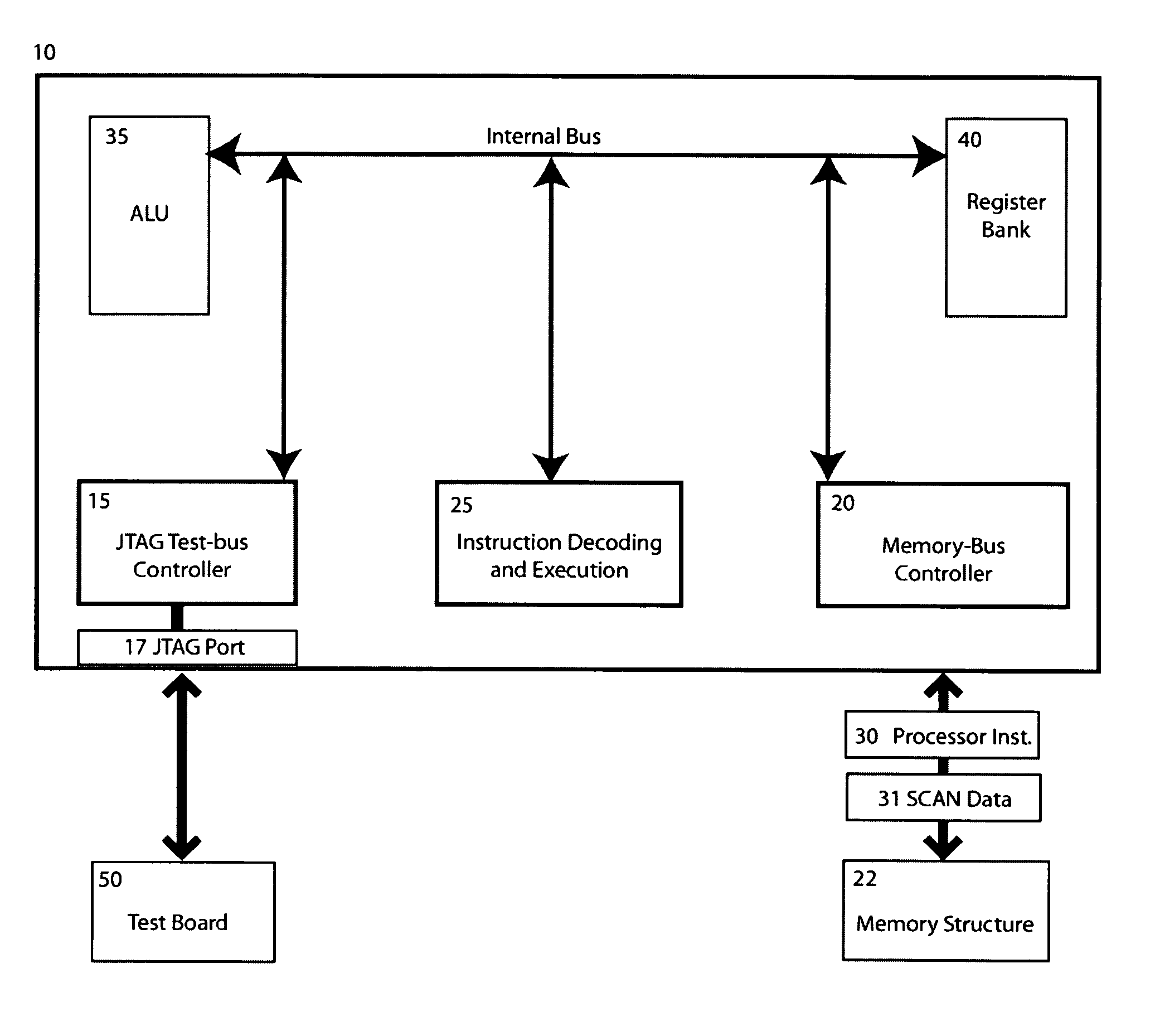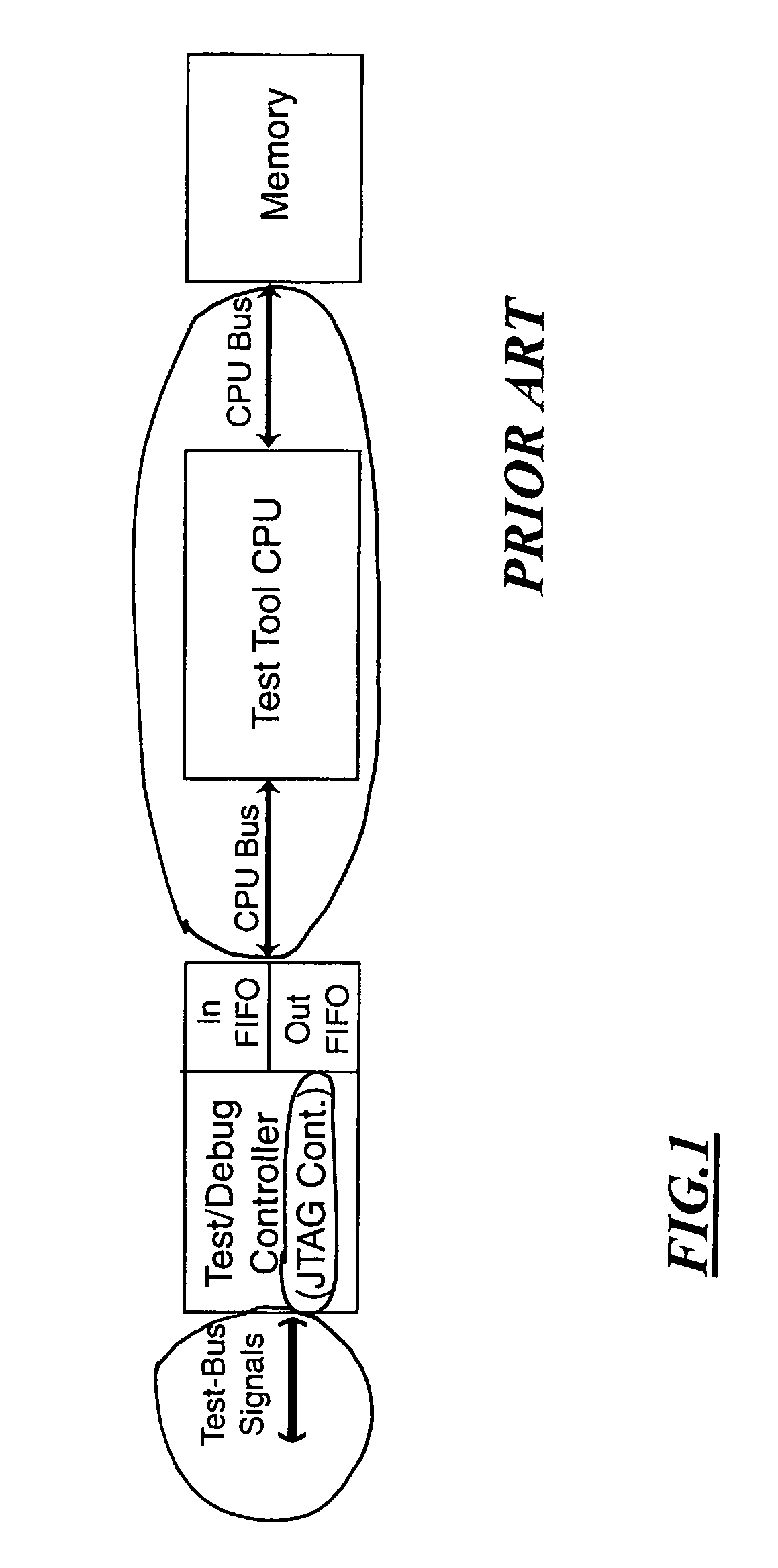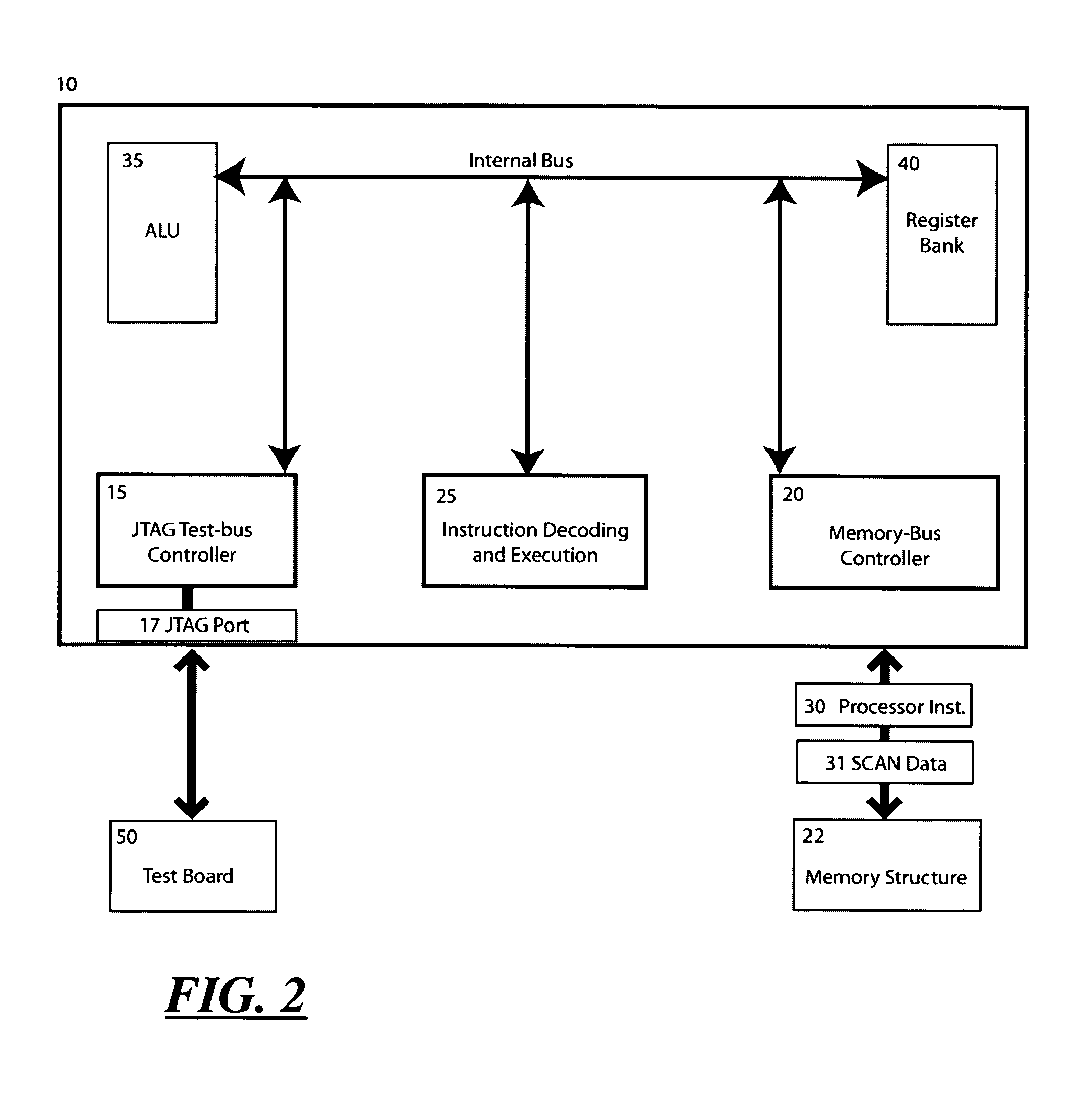Test and debug processor and method
a processor and debugging technology, applied in the field of electronic devices, can solve the problems of increasing the difficulty of debugging circuit boards after being assembled, needing synchronization, and wasting substantial time, and achieve the effect of increasing test speed and adding a lot of speed
- Summary
- Abstract
- Description
- Claims
- Application Information
AI Technical Summary
Benefits of technology
Problems solved by technology
Method used
Image
Examples
Embodiment Construction
)
[0026]Referring to the accompanying FIG. 2, there is shown and described a test and debug processor 10 that can execute native test instructions. The processor 10 includes a JTAG-bus controller 15 with a JTAG port 17 coupled thereto, a memory means 20 or 22 capable of storing processor instructions 30 and scan data 31, and an instruction encoding unit 25 capable of fetching or requesting processor instructions from the memory means 20 or 22. The processor 10 may also include an optional ALU 35 and a memory-bus controller 48 connected to the JTAG-bus controller logic 15 making it a bus master. For example, in the case of a JTAG, the CPU can execute a SCAN_IR or SCAN_DR instruction directly after fetching it from memory. An example for such an instruction would be SIR R5, R6. This will let the CPU choose the SCAN_IR JTAG state and send all or part of the contents of register 5 (R5) to the test board. The data coming back from the test board will be stored in register 6 (R6). Another ...
PUM
 Login to View More
Login to View More Abstract
Description
Claims
Application Information
 Login to View More
Login to View More - R&D
- Intellectual Property
- Life Sciences
- Materials
- Tech Scout
- Unparalleled Data Quality
- Higher Quality Content
- 60% Fewer Hallucinations
Browse by: Latest US Patents, China's latest patents, Technical Efficacy Thesaurus, Application Domain, Technology Topic, Popular Technical Reports.
© 2025 PatSnap. All rights reserved.Legal|Privacy policy|Modern Slavery Act Transparency Statement|Sitemap|About US| Contact US: help@patsnap.com



